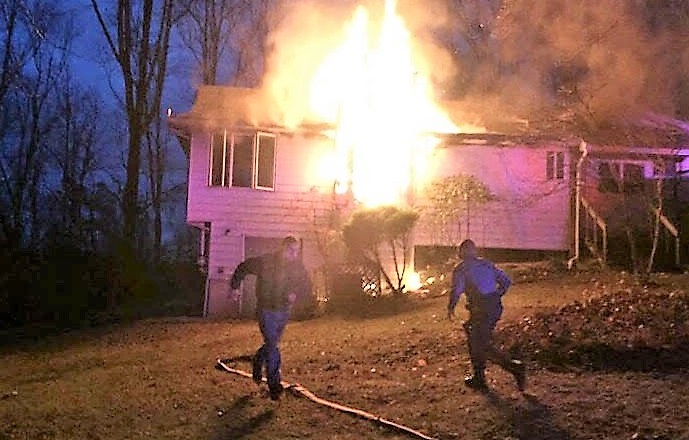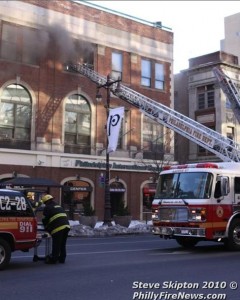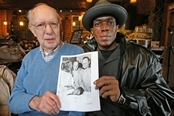John Oliver’s 911 take-down is important but incomplete
It was quite heartening last night to see John Oliver’s HBO show “Last Week Tonight” take on some of the many problems with 911 across the country. I’ve long reported on this topic for TV and written about it many times here at STATter911.com.
Oliver and his writers regularly do some great advocacy journalism. It’s mixed with a lot of humor, but is extremely effective (the funniest line from last night’s show is in reaction to something shot at the 911 center in Fairfax County with my friend Steve Souder). The show has the ability to get people to pay attention for more than 20-seconds to serious issues, pulling their focus away from such important trending topics as #ThingsIYellWhenICum and #MyUselessSuperpower (both currently trending on Twitter).
Much of Oliver’s story on 911 is based on the largely excellent work of investigative reporter Brendan Keefe from WXIA-TV in Atlanta, Georgia. Keefe has spent much of the last 15-months focusing on the negative impact cell phones have on 911. The main theme has been the failure by both our governments and wireless carriers to make sure 911 centers know the real location of those calling from cell phones. Brendan Keefe deserves a lot of credit for pushing this topic locally, regionally and nationally.
There’s little doubt the failure to hold industry and governments responsible for making sure the interface between your cell phone and the 911 center is seamless is an important topic worthy of 15-minutes of the John Oliver treatment. But, as I pointed out during Brendan Keefe’s initial stories in February of last year, the coverage also has an enormous blind spot. It generally ignores one of the key problems ailing 911 — having well-trained call takers and dispatchers who know the jurisdictions where they work.
In fact, Brendan Keefe’s exhibit number 1, used again last night by Oliver, is a perfect example of the human failure occurring regularly at many 911 centers. I wrote about it on February 2, 2015 in a column titled, “I call BS: Another 911 failure blamed on technology instead of training.”

John Oliver, last night, showed the story on the death of Shanell Anderson. Anderson, who had driven off a road into a pond in Cherokee County, Georgia, was able to call 911 as her SUV sank. She clearly provided an exact location: “The Fairway off of Batesville.” Anderson even gave the Zip Code. The problem for Anderson was the cell tower her call hit didn’t route it to 911 in Cherokee County. Instead it went to nearby Alpharetta, Georgia in Fulton County.
The 911 call taker was stumped by Ms. Anderson’s call because the streets and the intersection were not in the database for her jurisdiction and there was no reliable locator information coming from the cell phone. Keefe and 911 officials immediately blamed Anderson’s death on the lack of technology and never looked at the real reason help didn’t arrive in time for Anderson — poor training and procedures. It’s a myth that Oliver’s mostly excellent coverage has now helped spread even further and wider.
The truth is Shanell Anderson would have received help much sooner if the call taker, when her computer didn’t compute, had simply asked, “What county are you in?”
Unfortunately, Shanell Anderson’s death at age 31 lingers as the poster child for the disease that cripples 911. Instead, Anderson should be the face of something much more debilitating and pervasive that cuts across almost every aspect of life today: The loss of basic skills and critical thinking due to an over-reliance on technology.
Asking a caller the jurisdiction where they’re located when the location wasn’t in our database is something I was trained to do 40-years-ago. That’s when I was taking 911 calls as a fire department dispatcher in Prince George’s County, Maryland. This was well before cell phones and computer-aided dispatch. Today, with wireless technology frequently routing calls to the wrong 911 center, why wasn’t this call-taker trained in this simple skill and why weren’t those five words — “What county are you in?” — required by the center’s general orders?
This is not an isolated situation. While there are many people extremely well served by excellent 911 operations staffed by top-notch workers who have saved countless lives, there is also too much of the opposite. John Oliver and Brendan Keefe failed to highlight an important reality — there are many other Shanell Anderson type failures that deserve our attention.
In fact, John Oliver featured a lovely sound-bite from an employee at the 911 center in the Nation’s Capital that rightly focuses on the emotional toll that can come from working in this field. Unfortunately, DC’s Office of Unified Communications has been a prime example of the human failures that often plague 911 (check out these stories).
Too often callers are let down by workers who don’t know their jobs or jurisdictions very well, or a 911 center that doesn’t teach its employees how to use their brains and not just the computers in front of them. In the 1970s, I was required to know the geography and roads of Prince George’s County. It was also necessary, quite often, to rapidly do some critical thinking in order to get help where it was needed.
How confident are you the person answering 911 has skills that extend beyond what is on the screens in front of them? Today in 911 and the rest of life, we are very much at a loss on what to do when those screens go dark. My advice for the day, when we fail to get the job done, stop looking at the computer screen as the sole culprit and start looking at the mirror.





